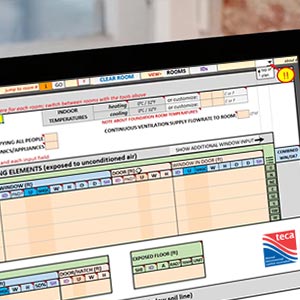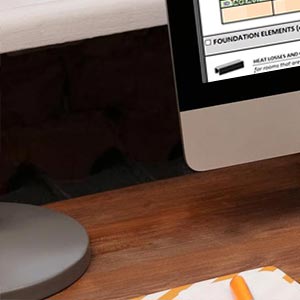print | Email a Friend | back
Are you a TECA member? If so, you pay our member's discount pricing. Please login or find out here if you qualify for our membership pricing.
This manual was designed for use with TECA's Quality First™ Hydronic Systems Design course.
9th Edition, September 2024
230 pages, coil-bound book
The Hydronic System Design course provides the guidance supporting the certification of technicians work with Hydronic Heating and Domestic Hot Water (DHW) Systems, or who desire an understanding of the design considerations.
This manual supports the design and installation of Hydronic Heating & the ancillary components. Sizing methods, example drawings, de?nitions, and descriptions of essential features and functions of the equipment have been provided.
This manual and related certification cannot replace other trade certifications for plumbing, refrigeration, sheet metal, electrical, or gas fitting.
This manual contains the currently accepted building standards and practices of TECA industry members and associate members. The installer must be familiar with local building codes that impact the installation of HVAC systems. Building codes can vary from city to city, and there may be local variance from this manual content. TECA updates our training curriculums as much as possible to stay in step with evolving regulations.
The manual includes step-by-step heat loss, estimate, and design worksheets, examples of worksheet use, all necessary charts, tables and formulas in Imperial measurements, explanatory text, diagrams, pictures, and more.
The Hydronic Systems Design Manual covers the entire design process, including:
- Principals of energy transfer, heat loss, & properties of fluids
- Pipe sizing & determining equivalent lengths
- Calculating system loads
- Calculating domestic hot water loads, & loads for custom plumbing fixtures
- Calculating & designing domestic hot water recirculation systems
- Analysis of different pump constructions, motor types, & circulation modes
- Expansion tank sizing & equipment selection
- Valve selection and comparison of a variety of valve designs
- Heat exchanger selection and design considerations
- Hydraulic separation methods, such as closely spaced tees, low-loss headers, & buffer tanks
- Piping components such as radiant heating manifolds and near boiler piping component locations
- Multi-boiler design considerations
- Analysis of piping schematics
- Piping strategies, including bypasses, direct vs reverse return configurations, primary-secondary piping configurations, & multi-port hydraulic separators
- Heat emitter selection
- Boiler and other energy source selection
- Basic electrical & control theory, including wiring diagrams and control strategies
- Hydronic system worksheets, checklists, & design tables
- Pool & spa calculation and system design
- Snow & ice melt calculation and system design
- Commissioning and balancing best practices
To order, please select one of the options above. For bulk orders, please contact us to send a purchase order. Please allow up to 2 weeks for delivery.
DISCLAIMER: This manual was developed in consultation with, and using information obtained from manufacturers, suppliers, contractors and others with specialized experience. It is subject to revision as further use and investigation may show such revision necessary or desirable. Installations and designs that comply with this manual will not necessarily be acceptable if, when examined and tested, they are found to have features that impair the result contemplated by these requirements. The authors and editors assume no responsibility and accept no liability for the application of the principles or techniques contained in this manual or for errors or omissions and expressly disclaim any such responsibility.






